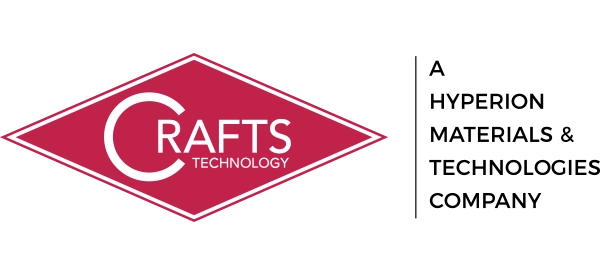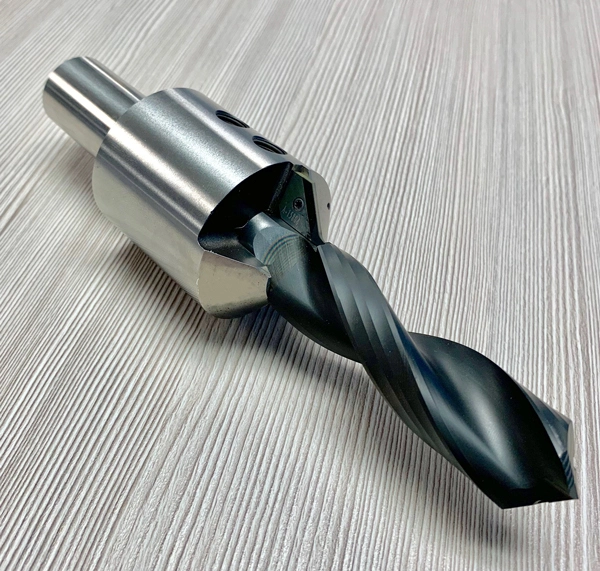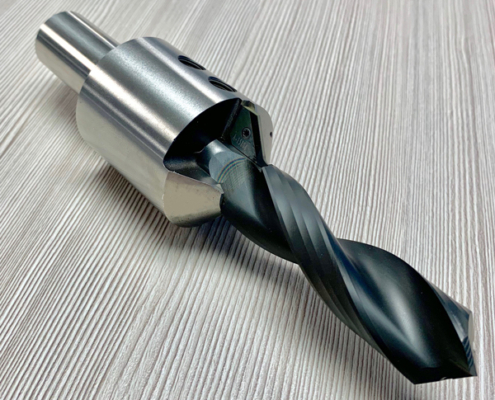Achieving a Robust, Dynamic, & Innovative New Product Launch Cycle through Strategic Partnership
Achieving a Robust, Dynamic, & Innovative New Product Launch Cycle through Strategic Partnership
Releasing a new product is frustrating, challenging, and stressful. Everything from new designs, new prints, new tooling, varying inputs (the list goes on) all need to be considered in the effort of producing an optimum solution.
If the process is conducted with high efficiency, substantial results are achieved. Further, if you can achieve a well-established New Product Launch Cycle, you possess the foundation for continuous improvement, so that you may improve this process year after year. This continuous improvement allows for quicker implementation of innovations and improvements of your products.
With the dynamic climate that new production demands, this strategy can be the critical differentiator in your market.
At Crafts Technology, we have witnessed and been a part of hundreds of such new product launches. We have been involved in every stage of the New Product Launch Cycle. There are substantial benefits to having a partner that understands the design, engineering, application, and manufacturing techniques that are required to achieve a streamlined new product launch strategy. Having us as a partner can develop into a true extension of your team that you can capitalize on year after year.
Examples of Technology that Crafts has applied this New Produce Launch Cycle include: Modular Composite Tooling, Nozzles & Needles, AFP & ATL Composite Blades, micro-manufacturing, and Knives, Anvils, and Slitters.
This article walks through the stages of the New Product Launch Cycle and identifies how partnering with a strategic supplier, like Crafts Technology, for all of these stages achieves expedited and enhanced results.
The 6 stages of a New Product Launch Cycle are:
- White Board Idea
- Prototype
- Validation
- Pilot
- Production
- Continuous Improvement.
Releasing a new product is frustrating, challenging, and stressful. Everything from new designs, new prints, new tooling, varying inputs (the list goes on) all need to be considered in the effort of producing an optimum solution.
If the process is conducted with high efficiency, substantial results are achieved. Further, if you can achieve a well-established New Product Launch Cycle, you possess the foundation for continuous improvement, so that you may improve this process year after year. This continuous improvement allows for quicker implementation of innovations and improvements of your products.
With the dynamic climate that new production demands, this strategy can be the critical differentiator in your market.
At Crafts Technology, we have witnessed and been a part of hundreds of such new product launches. We have been involved in every stage of the New Product Launch Cycle. There are substantial benefits to having a partner that understands the design, engineering, application, and manufacturing techniques that are required to achieve a streamlined new product launch strategy. Having us as a partner can develop into a true extension of your team that you can capitalize on year after year.
Examples of Technology that Crafts has applied this New Produce Launch Cycle include: Modular Composite Tooling, Nozzles & Needles, AFP & ATL Composite Blades, micro-manufacturing, and Knives, Anvils, and Slitters.
This article walks through the stages of the New Product Launch Cycle and identifies how partnering with a strategic supplier, like Crafts Technology, for all of these stages achieves expedited and enhanced results.
The 6 stages of a New Product Launch Cycle are:
- White Board Idea
- Prototype
- Validation
- Pilot
- Production
- Continuous Improvement.
- White Board Idea
Transitioning an idea from a white board to full market integration is a difficult process. Having a supplier that understands the offering from the beginning can streamline the entire process.
The typical evolution of an engineering project begins with a concept on a white board. What happens to this white board sketch?
Typically, a model is developed, prints are made, cost and benefits are analyzed, and then a decision is made to solve testing. The process sounds simple, but a multitude of factors have to be considered to achieve results.
Just a sampling of the questions that may arise include:
- Are we performing finite element analysis on the unit?
- What constraints/forces are present on the element during use?
- What tolerances do we need to apply on the features?
- How do we measure some of these features?
- Can these features be produced economically?
We at Crafts Technology form an extension to our partners’ engineering teams by streamlining answers to many of these questions. We sit in on the White Board meetings to supply engineering knowledge in a dynamic fashion that allows for enhanced, cost-effective, and efficient decision choices at the very beginning of the project.
Stay Up to Date on the Innovations from Crafts Engineering & Manufacturing Team
Stay up to date with informative articles from Crafts Technology Engineering Team every other Month.
Articles cover all that Crafts is, making sure to share our knowledge for the betterment of the world’s industrial equipment.
Categories include:
- Engineering Design
- State of the Art Manufacturing
- Lean Manufacturing
- Cultural Development
- Social Impact
Bonus+
Crafts Technology SuperHard Material Properties Guide
Included with Sign Up!
- Prototype
Moving an idea to a physical unit involves many steps. A supplier that has been included in the White Board meeting already understands the design intent of the offering. This understanding and expertise of the material and manufacturing methods can streamline the fabrication of prototypes with minimized back-and-forth between the parties. At Crafts Technology, this is part of what we do; we are involved from the start of the project to expedite the transitions throughout the New Product Launch Cycle.
If you do not possess a strong partnership with your supplier’s engineering team, a supplier may only be introduced to the project at the Prototype stage. The engineer or purchasing agent may contact a supplier to fabricate prototypes, which is often a supplier suited for small quantity manufacturing. In this case, the supplier is seeing the prints for the very first time. They may have questions about the design, tolerances, fabrication techniques, etc. But answers to these questions are typically hard to obtain as the OEM’s engineering team has already moved on to other tasks. This process delays the production of the prototypes and does not achieve a communication channel that can enhance the product offering.
However, if you have a supplier such as Crafts Technology that was a critical member of the White Board meetings, they are already extremely well-versed with the product. They have already obtained answers to questions and provided their input to enhance the offering. This process has therefore been significantly streamlined, and the OEM’s engineers have the freedom to work on other tasks without being interrupted.
- Validation
At this stage, prototypes are in the hands of the OEM’s engineering team. Testing of the prototype can be conducted to gauge performance. During this process, many improvements may be identified. Integrating the strategic supplier in these discussions allows for the identification and application of enhancements to achieve the optimum solution. These updates can be implemented because the strategic supplier possesses detailed knowledge of the manufacturing steps that were conducted to achieve the prototype.
Through testing, if anomalies or design enhancements are identified, the strategic supplier can provide input on why those anomalies exist or how to address them within the fabrication of the units.
Questions that can arise at this stage of the process include:
- Can we adjust a feature to achieve the desired results?
- If we tighten a particular tolerance, will be able to achieve the x result in performance; how would this affect the cost of the product?
- We did not expect a particular interference; can this be easily addressed in the manufacturing process?
- We achieved performance above what we expected; is this sustainable?
Forming confident answers to these questions is critical to achieving the optimum solution in the quickest amount of time. Only through a strategic supplier can obtaining these answers be done correctly.
Additionally, It is possible that updates that are addressed at this stage do not require validation, further expediting the New Product Launch Cycle. Validation may be able to be circumvented due to the strategic supplier’s and OEM’s combined experience and expertise on the application of the update.
- Pilot
At this point, the design has been validated and chosen. The next stage is to scale up the fabrication of the solution to a quantity that reflects production forecasts. If the strategic supplier has been included in all aspects before the pilot, they can use their knowledge to develop processing that will produce the units at volume with the highest precision and repeatability.
However, in a typical evolution of the New Product Launch Cycle – that is, without a strategic supplier such as Crafts Technology – a second supplier has to be integrated into the process for larger volumes. This new supplier receives a print of the product and must work to understand all of the engineering aspects that have been previously identified. Either this supplier must do significant due diligence to produce components at the same performance of the prototypes or corners are cut to produce at volume. Either way, this process significantly delays the Product Launch Cycle, or, worst case, the product offering does not achieve the identified performance metrics, resulting in loss of customer confidence.
- Production
At this point, the solution has gone through the Pilot stage of manufacturing. The strategic supplier that has been involved throughout the entire New Product Cycle can concentrate on achieving a sustainable and scalable manufacturing process. Production volumes can begin immediately with high confidence in performance and sustainability.
If a second supplier had been utilized, they had to focus during the Pilot on understanding and solving for the very first time. As a result, regular delays occur as the supplier works through the understanding of, and complications in, the fabrication process.
However, by using the same strategic supplier throughout each stage of development, full production can begin immediately after the Pilot stage. The supplier will have already refined the process, which means that they are ready and equipped to meet the requirements.
As production is scaled up, Six-Sigma quality standards can be integrated into the process to monitor and maintain any process variabilities.
- Continuous Improvement
At this stage, the parts are being fulfilled at the production rate. The solution is performing exactly as the prototype and the entire project is a success.
Conversely, if a second supplier had been used, they would still be working through the pains of meeting the volume demand and/or performance metrics. This pain is felt both by the supplier and the OEM, resulting in a tarnished relationship. This relationship is not conducive to the continued improvement of the New Product Launch Cycle.
However, if a strategic supplier was used throughout the New Product Launch Cycle, the process has already been streamlined, and performance metrics have been met.
A partnership has now been established between the supplier and OEM that increases confidence within the combined team as the next product is implemented.
Conclusion
This article has walked through the stages of a New Product Launch Cycle and identified how partnering with a strategic supplier for all stages in the process achieves expedited and enhanced results. The strategic supplier has now developed into an extension of the OEM’s team. This collaboration has enhanced all members understanding of the design, materials engineering, and manufacturing engineering aspects and produced the desired product efficiently and cost-effectively. And this expertise can now be harnessed on the very next project.
Integrating a strategic supplier, such as Crafts Technology, in every step in the process results in a robust, dynamic, and innovative New Product Launch Cycle that will be a critical differentiator in the OEM’s market for years to come.







